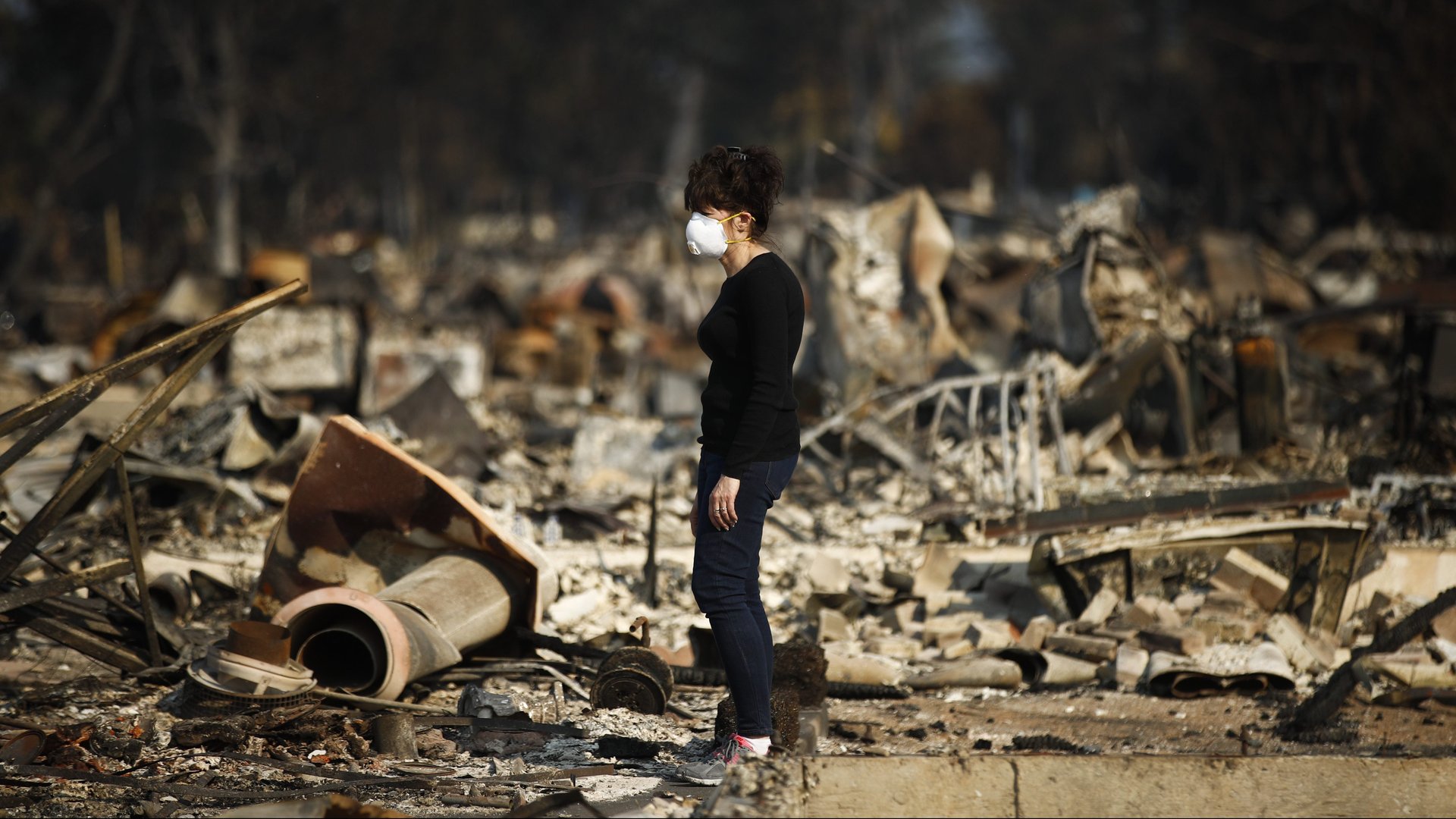The California power utility suspected in North Bay fires opposed safety measures over expense
Power lines can cause wildfires. If one comes in contact with a dry tree—of which California has plenty—it can cause a spark, then a flame. On the night of Oct. 8, when the wildfires that have ravaged northern California began, local fire crews were called to at least 10 different locations along Pacific Gas & Electric’s power lines after 911 calls reported sparking wires and other problems.


Power lines can cause wildfires. If one comes in contact with a dry tree—of which California has plenty—it can cause a spark, then a flame. On the night of Oct. 8, when the wildfires that have ravaged northern California began, local fire crews were called to at least 10 different locations along Pacific Gas & Electric’s power lines after 911 calls reported sparking wires and other problems.
And just two days before that, California utility companies including PG&E succeeded, yet again, in getting a safety initiative intended to prevent future fires delayed, the Mercury News reports. (This has happened at least five times before, according to a state Senate subcommittee.)
The initiative, nearly a decade in the making, would have essentially mapped where power lines pose the biggest fire threat. PG&E, along with other California utilities, opposed it. According to a PG&E statement in July, parts of the initiative would “add unnecessary costs to construction and maintenance projects in rural areas.” Now, after years of opposing the new safety rules, PG&E’s lines are prime suspects in this month’s wildfires.
According to reports reviewed by the Mercury News, the utilities have resisted stricter construction standards until the maps are completed. If the maps had been finished before Oct. 8, PG&E may have been required to inspect its lines in the region that includes the Napa Valley wine country more thoroughly—and clear away more trees that might come in contact with them.
“The sad part is the future didn’t arrive before these fires,” California state senator Jerry Hill told the Mercury News. He also criticized the state Public Utilities Commission, saying “It’s an outrageous example of negligence by a regulatory agency.”
When the possibility that PG&E could be culpable first surfaced, the company acknowledged that some of its equipment failed and said that the region was experiencing an “historic wind event” when the fires started. However, according to the Mercury News, wind speeds were only half of what power lines are by law required to be able to withstand.